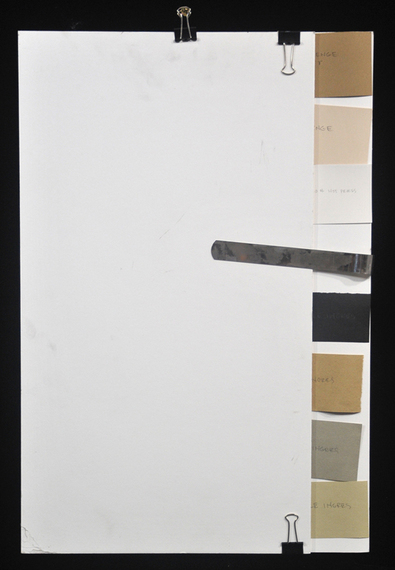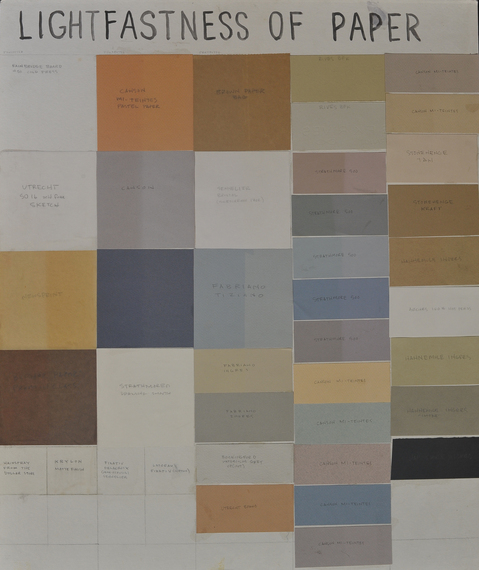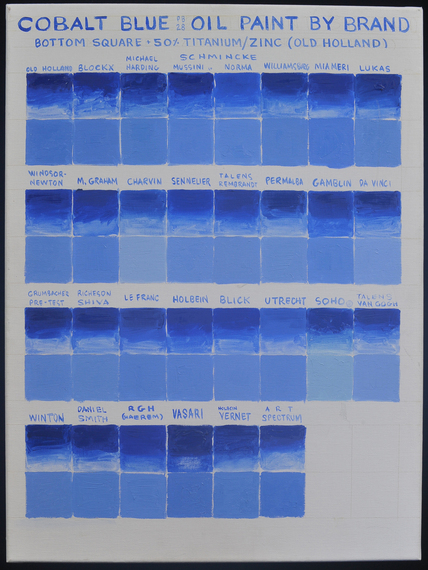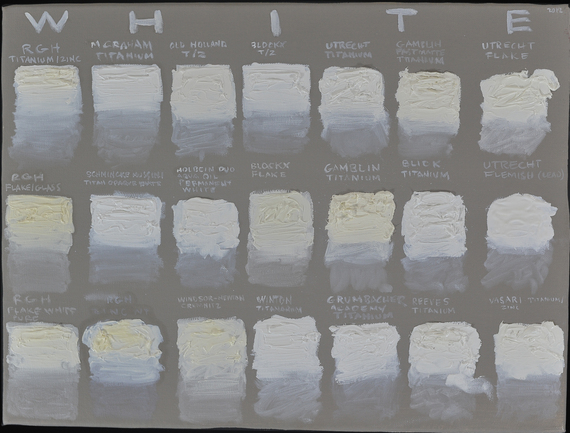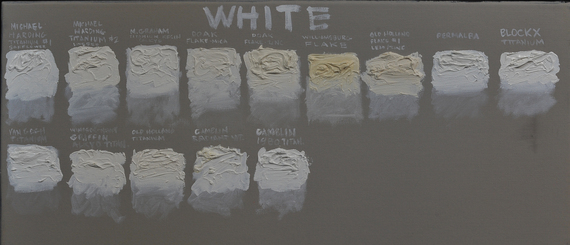Materials embody what we do as artists and there are a lot of options for art materials. I teach drawing and painting and sorting out the quality and permanence of paper, drawing media and oil paint is something important to do at the outset to help us all make more informed choices as we shop for materials.
What do I mean by "good"? The first criteria is permanence, how long papers stays the same color, for example. Exposure to light speeds the deterioration of paper. I'm fortunate to have friends in conservation, Tiarna Doherty, Chief of Conservation at Lunder Conservation Center, Smithsonian American Art Museum, told me that a few weeks of direct exposure to sunlight is a good index of how well materials will hold up over a longer period of time.
I made a a paper chart, the right side of each sample was exposed to sunlight for a few weeks and the left protected, like this-
Below is the chart, there are many more papers that the ones I tested, these are the ones that are the most readily available for my students, plus a few others I was curious about.
Newsprint, a staple of inexpensive art school paper, didn't hold up so well, it's made from wood pulp which is bleached out with acid before it's rolled out on steel rollers -- the acid isn't neutralized, which contributes to newsprint's rapid deterioration. Some of the colored papers fare better than others, and some samples like the Fabriano Tiziano refute the manufacturer's claim of lightfastness for the paper. Some papers are made from cotton and/or linen which have proven to be quite stable over time, this is referred to as "rag content," for example Arches Watercolor Paper is 100% cotton rag. Works on paper are more fragile than paintings which is why when you go to a museum, the drawings are not all on display, and are sometimes displayed in rooms that are kept darker than rooms with paintings.
Below is the same test on a range of drawing materials.
Most are very permanent, with some unsurprising exceptions, like coffee, and some surprising exceptions, like Sennelier's Ulramarine Blue ink (Ultramarine Blue is a lightfast pigment, so it's possible that there's also a dye which is less lightfast in the ink as well).
There is a much broader range of drawing materials than this, and the point for me is to show how to verify claims of permanence and quality that manufacturers and sellers of art supplies make. If you're investing a lot of yourself and your resources in your work, it's worthwhile investigating how permanent and well made your supplies are.
Above is a chart I made of all of the brands of Cobalt Blue I've found so far. The top square of each brand sample is pure paint without medium applied thickly to transparent, the bottom square is each brand plus 50 percent Old Holland Titanium Zinc White as my control group. The bottom samples tell you how much Cobalt Blue pigment each brand has. Cobalt Blue is an expensive pigment and so it makes for a much better index of brand quality than an inexpensive pigment since the fillers and stabilizers that manufacturers use to dilute and stabilize paint would be about the same price for a less expensive pigment like Raw Umber.
Stabilize in this case largely means to keep a consistent viscosity -- I've made Cobalt Blue oil paint and it gets runny when you mull the paint and needs a little stabilizer to thicken it. Adding an excessive amount of stabilizer is one way manufacturers can dilute paint and still claim to have "no fillers."
Above is a chart of white oil paints, the chart was about a year old when I photographed it. My interest here was to see how white different types of white oil paint stay white.
Since I've started doing this type of thing, I've heard from some manufacturers. RGH is a small paint company out of New York, they make paint that is a great balance of quality and affordability and were going to reformulate some whites based on my tests, so I'll have to retry it and date the samples.
I hope this encourages more investigation, it's a can of worms I've enjoyed opening and will share more as I continue to explore and learn. Many artists I know do this type of thing as well, David Gluck and Kate Stone have a great blog with lots of information about materials . Some of my artist friends wisely get paint companies to sponsor them, getting free supplies, etc. I do this because I love art materials, although I'm sure what I'm presenting here won't please some of the manufacturers, my intention isn't to attack anyone, but to have a frank an honest exploration about the quality of materials.

